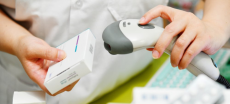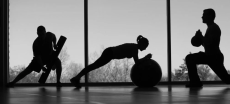[vc_row][vc_column][vc_column_text dp_text_size=”size-4″]As the world marks World AIDS Day on December 1, 2023, a collective effort to raise awareness, commemorate those we have lost, and celebrate progress in the fight against HIV/AIDS is underway. This year’s theme, “Ending the HIV Epidemic: Equitable Access, Everyone’s Voice,” emphasizes the need for inclusivity and equal access to healthcare resources to eliminate the stigma associated with HIV/AIDS.
Numerous misconceptions surround individuals living with HIV/AIDS that require clarification. A pervasive social stigma perpetuates the belief that mere contact with those affected by the disease can lead to virus transmission.
Also Read: How to Use Pracaxi Oil for Hair?
However, the virus is only transmissible through the exchange of bodily fluids such as blood, breast milk, semen, or vaginal secretions from patients.
A medical professional has dispelled some of these myths:
- Myth: HIV can be transmitted through coughing, touching, or shaking hands. Reality: Routine touch or cough does not transmit HIV; the virus can only be transmitted if the skin has ulcerations or abrasions.
- Myth: Those diagnosed with HIV will die within a few months. Reality: With long-term viral suppression medications, individuals diagnosed with HIV can live for several years.
- Myth: Children born to HIV-positive women will invariably be HIV-positive. Reality: Antiretroviral treatment, C-section, and precautionary measures can reduce the risk of transmission to newborns to less than 2%.
- Myth: HIV is a viral disease, and antibacterial or antifungal medicines are ineffective. Reality: Individuals with HIV may require long-term antibacterial and/or antifungal medicines due to compromised immunity.
- Myth: There is no risk if two or more HIV-positive patients engage in intimate activities. Reality: Unprotected sex can promote the evolution and transmission of dangerous strains of HIV.
- Myth: Asymptomatic individuals with HIV do not have the virus. Reality: HIV may take years to manifest symptoms and can only be diagnosed through testing.
- Myth: Medicines taken before intercourse can prevent HIV transmission. Reality: Pre-exposure prophylaxis minimizes risk but does not eliminate it completely.
- Myth: Sharing food, drink, and cooking utensils with an HIV-infected patient increases the risk of transmission. Reality: The virus cannot be transmitted through these activities.
- Myth: One need not worry about preventive aspects like safe sex even after being diagnosed as HIV-negative but belonging to a high-risk group. Reality: High-risk individuals should undergo multiple tests, including the GP24 assay and repeat antibodies test in 3 to 6 months.
- Myth: HIV can be transmitted through infected insects and pets. Reality: This myth is untrue.
- Myth: Blood transfusions raise the risk of HIV. Reality: With recent stringent precautions and testing, the risk of HIV transmission through blood transfusions is almost zero.
- Myth: A virus-infected person undergoing treatment cannot spread the virus. Reality: Despite treatment, a person carrying HIV can still be infectious, although treatments can lower the amount of the virus to a negligible level.
[/vc_column_text][/vc_column][/vc_row]











